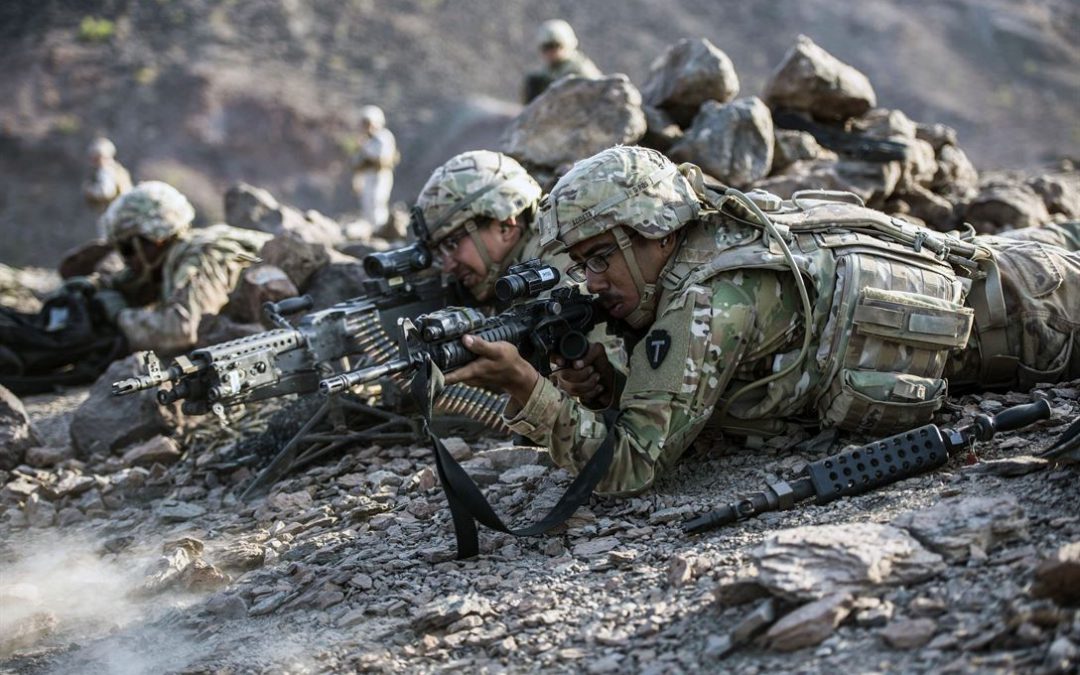WASHINGTON- As U.S. military presence in African nations slowly increases, American troops are more likely to confront child soldiers, an encounter they might not be prepared for.
Child soldiers are underage individuals directly taking part in hostilities, either on behalf of a government military such as the one in Congo in 1998 or an armed group like Boko Haram and ISIS.
The Department of Defense does not have a set of policies that explicitly instruct U.S. military on how to interact with child soldiers.
A guide to protecting civilians prepared by the All Peacekeeping and Stability Operations Institute within the Army War College, advises that “while soldiers always have the right of self-defense and it can be hard to distinguish a child from an adult at distance, units may modify their methods and objectives if they know that an adversary’s forces include child soldiers.”
The guide fails to state what these modifications would entail. More importantly, the guide is not the official policy or position of the Department of Defense, the Department of the Army or the U.S. government.
The Pentagon repeatedly failed to reply to requests from Medill News Service for comments on U.S. policy in dealing with child soldiers.
U.S. combat troops were present in Djibouti, Kenya, Libya, Somalia, and 11 other non-African countries between 2015 and October 2017, according to a Brown University study.
Combat troops usually engage in “direct action on the ground against terrorism” either in the host country or in a neighboring country.
The troops in Nigeria, Burkina Faso, Mali, Niger and other countries where Boko Haram and Al Qaeda in the Islamic Maghreb (AQIM) are notorious for recruiting child soldiers, only perform “training and/or assistance to the country’s security forces to combat terrorism, according to the study.
However, the Oct. 4 ambush in Niger that killed four U.S. soldiers shows that the very presence of U.S. troops in these countries opens up the possibility of engaging with child soldiers, regardless of the initial scope of their official mission.
Less than a year ago, the Canadian military became the first — and is still the only military in the world — to issue official guidelines on how to confront child soldiers in conflict zones.
The Canadian Armed Forces developed a doctrine to “specifically address the unique challenges faced by military members confronted by child soldiers while deployed on operations.”
Commonly known as the JDN, the Canadian doctrine provides commanders with “baseline guideline for their pre-deployment training, operational and mission-specific consideration, and post-deployment follow-up for personnel.”
Child soldiers aren’t restricted to African nations; American troops have encountered child soldiers in Afghanistan, Syria, and Iraq over the past few years.
A Department of Veterans Affairs study showed that soldiers and Marines who had more combat stress such as seeing dead bodies, being shot at, being attacked or ambushed, had more mental health problems such as post-traumatic stress disorder. Soldiers and Marines in Iraq reported more combat stress and had higher rates of PTSD compared to those in Afghanistan with less combat stress and lower rates of PTSD.
During a discussion on the use of child soldiers, retired Canadian Lt. Gen. Romeo A. Dallaire who was medically released because of the PTSD he suffered from as a result of his mission in Rwanda during the 1994 genocide, shared the story of a veteran who struggled with hugging his own kids due to the psychological trauma of having encountered child soldiers.

